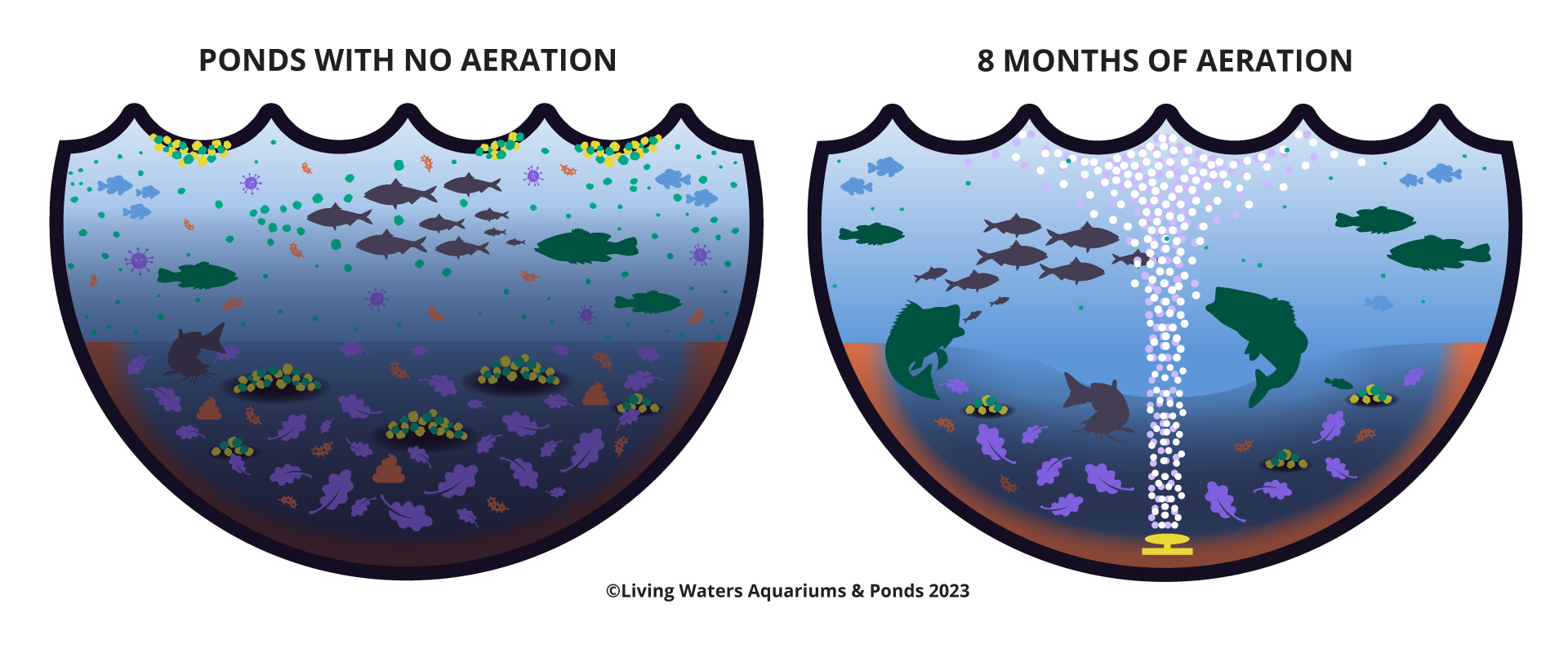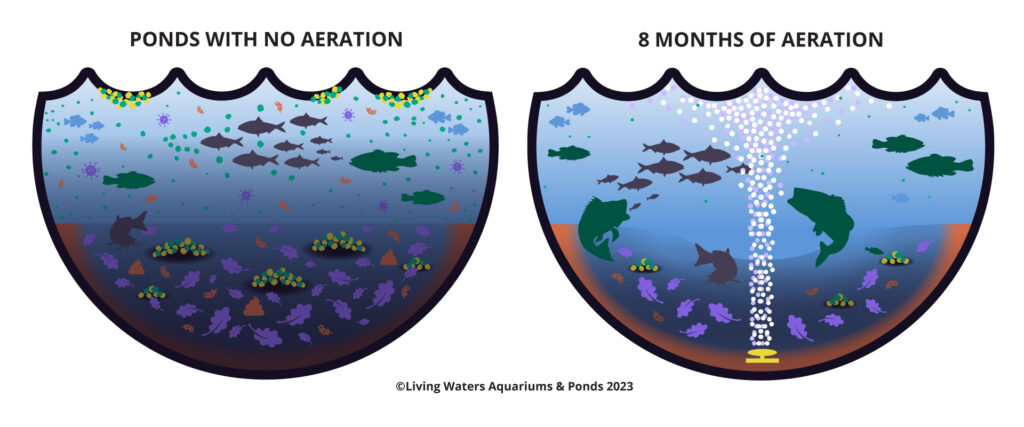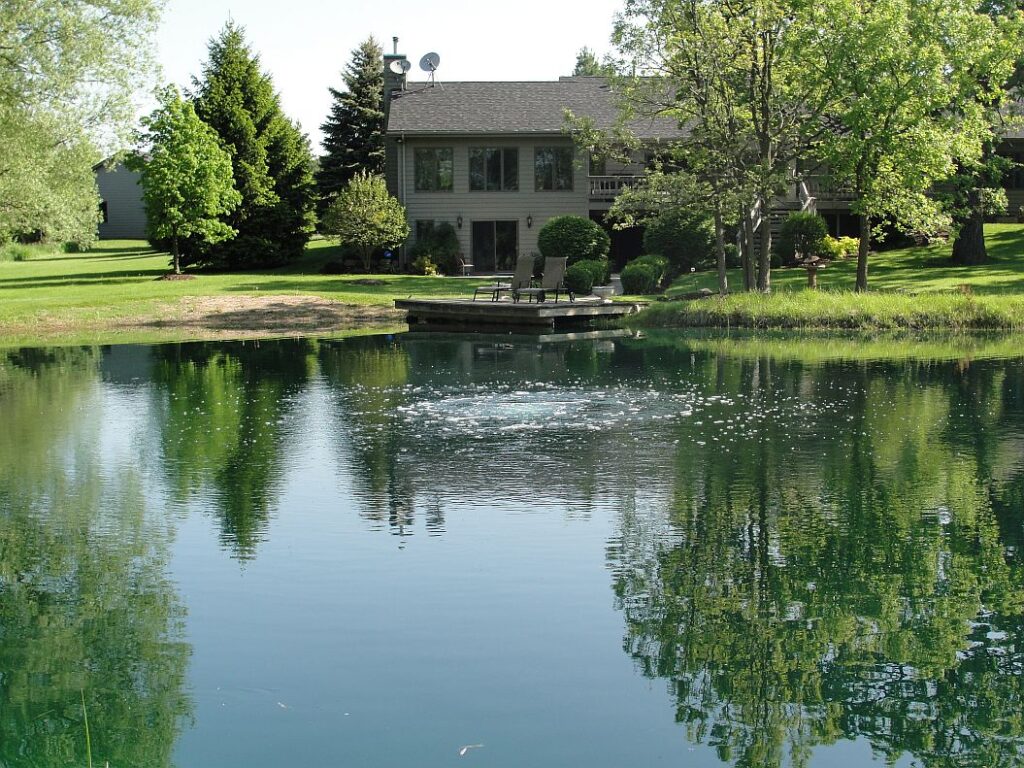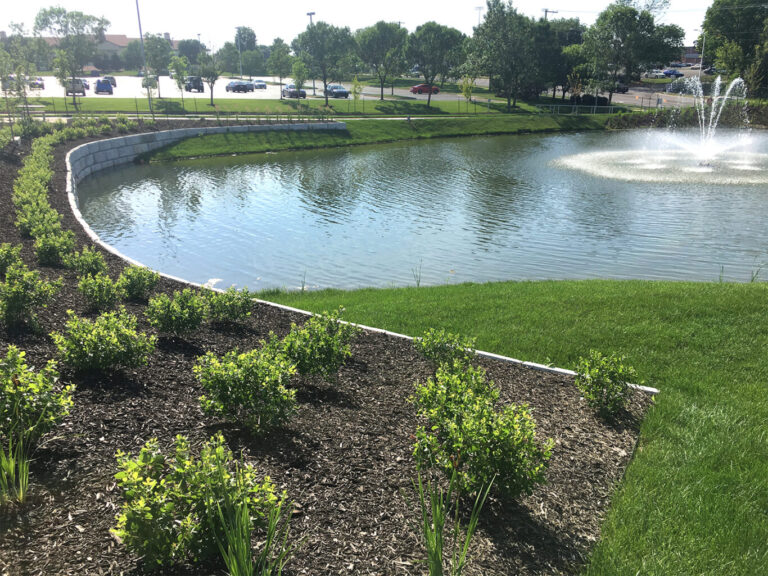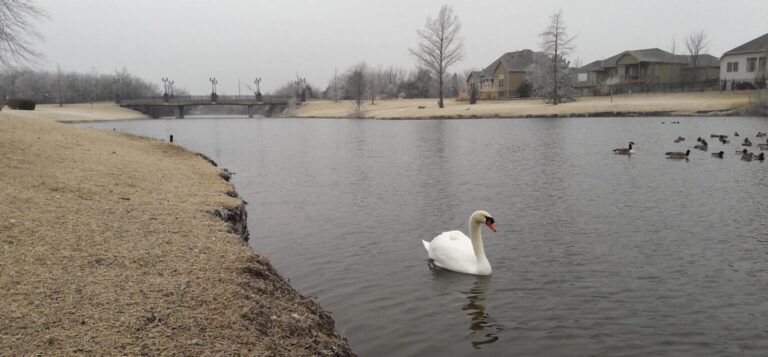Buyer’s FAQ Guide for Pond Aeration Kits, Subsurface Diffused Aerators & Air Pumps
How is an aerator different than a fountain?
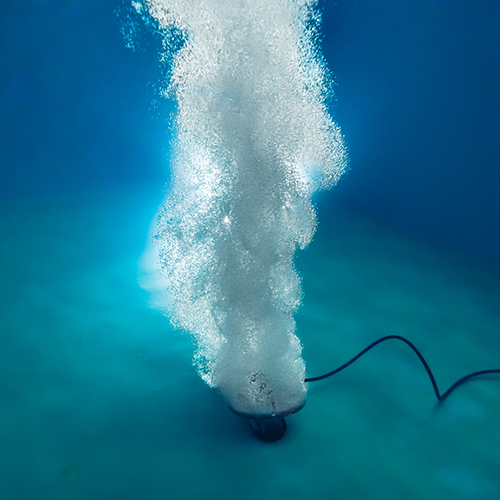
A fountain floats on the surface of your pond. Aerators are about the same price as a fountain. While a fountain sucks-in water immediately around the fountain centerpoint, pond aeration is sub-surface. It does not look like any fountain. In fact its nearly invisible: the only visible aeration features are a small number of locations on the surface with a fizzing or boiling appearance. Bubbles are emitted at the pond bottom, and what you see is micro-bubbles dispersing much like an underwater chimney (containing oxygen, not smoke). This emitter is a stationary diffuser the size of a dinner plate. Diffusers have no moving parts, and are connected to a compressor above the surface via sinking air hoses. The electric compressor is discreetly located in a green locking utility cabinet on your pond bank.
How long before I see results from aerating my pond?
Most residents begin to notice results within 12 weeks. If your pond water has poor visibility, the first result will be an increase in water clarity. Your pond will gain protection from fishkills and blue-green algae in about 3 months. Look for reductions in algae and pond scum in the growing seasons that follow installation.
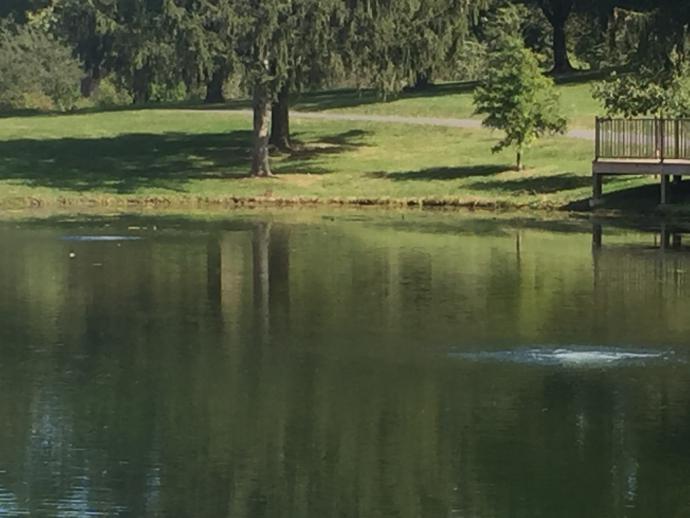
How does a subsurface pond aerator work?
High-volume aerators produce millions of bubbles. The micro-bubbles rapidly dissolve in water, while the large column of air creates hydrodynamic lift force- its like a chimney. The bubbles drag water with them as they travel from the bottom of the pond to the surface. This upward water movement turns into surface movement and turbulent movement. Surface movement makes your pond breathe, and turbulent movement mixes your whole pond- it breathes very deeply. The resulting oxygenation will steadily improve your pond ecosystem as we promise.
The Northwest area of my pond is always dirty. How will aeration help?
After your initial consultation, we prefer to visit the pond site and see the dirty spots for ourselves. Some types of trees make your pond more dirty. Sometimes, the Northwest edge of the pond is dirty because thats where litter floats with our prevailing winds.
We position your diffusers in the best locations we can determine to maximize the amount of cleaning work done.
Will aeration help any of my pondweed problems?
No. Aeration will have no effect on pondweeds. The only vegetation that aeration will control is algae.
Aeration has no effect on naiads or coontail. Aeration has a negligible effect on floating plants such as lily pads or creeping water primrose. Over time, proper aeration may have indirect effects on duckweed.
matala airmax hose muck machine stones methods blower tubing basics ideas backyard sizing algae facts forum bottom accessories advantages aquaculture youtube supplies wiki wind winter cost companies electric vertex pond boss evaporation venturi videos ufa units equipment american techniques deep emergency bubble solutions devices airtech calculator disc retention requirements results cheap quality price purpose inexpensive efficiency plants benefits oase mega affordable natural chart filter information bass catfish de icer ebay problems plans koi air oxygen oxygenator


